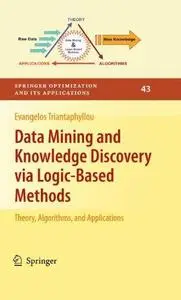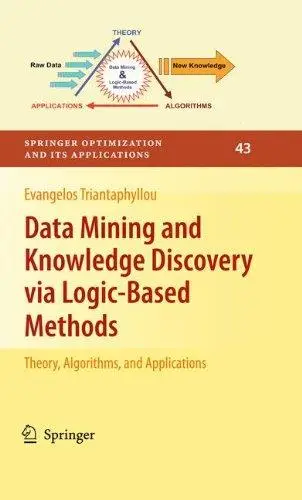Data Mining and Knowledge Discovery via Logic-Based Methods: Theory, Algorithms, and Applications By Evangelos Triantaphyllou
2010 | 350 Pages | ISBN: 1441916296 | PDF | 7 MB
2010 | 350 Pages | ISBN: 1441916296 | PDF | 7 MB
The importance of having ef cient and effective methods for data mining and kn- ledge discovery (DM&KD), to which the present book is devoted, grows every day and numerous such methods have been developed in recent decades. There exists a great variety of different settings for the main problem studied by data mining and knowledge discovery, and it seems that a very popular one is formulated in terms of binary attributes. In this setting, states of nature of the application area under consideration are described by Boolean vectors de ned on some attributes. That is, by data points de ned in the Boolean space of the attributes. It is postulated that there exists a partition of this space into two classes, which should be inferred as patterns on the attributes when only several data points are known, the so-called positive and negative training examples. The main problem in DM&KD is de ned as nding rules for recognizing (cl- sifying) new data points of unknown class, i. e. , deciding which of them are positive and which are negative. In other words, to infer the binary value of one more attribute, called the goal or class attribute. To solve this problem, some methods have been suggested which construct a Boolean function separating the two given sets of positive and negative training data points.



